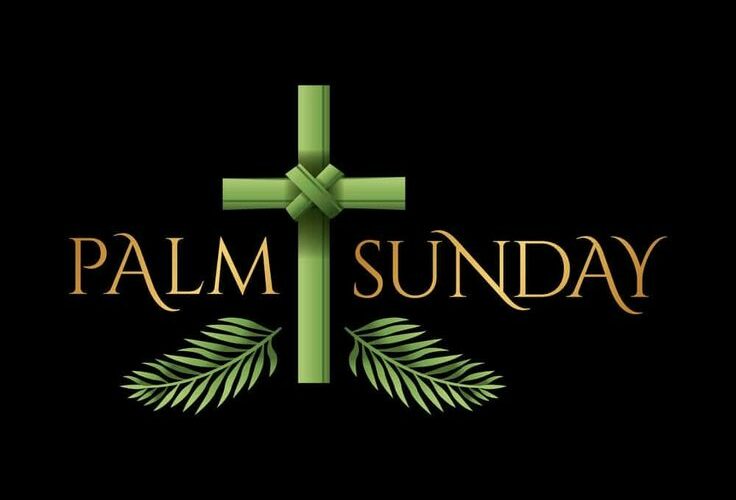We have come to the central week of the Church’s year. Over the next few days we shall have before us the mystery of Christ’s suffering, dying and rising. For us as Christians there is nothing more important than this event. The fact that for us and for our salvation Christ came, suffered, died and rose again.
Yet what does it mean to say this? To speak of this most terrible destruction of – not just any but the most perfect – of humans being for us and for our salvation? Is it not a frightening thought, if not a terrifying one?
Particularly so as – on this day – we see just how quickly public opinion can change. This liturgy in particular never fails to imprint this fact on us. We begin with shouts of acclaim. But not even at the end, but halfway through, the whole mood changes and we are no longer acclaiming the true King coming into the Holy City, but clamouring instead for his blood.
The 20th century French theologian, Maurice de la Taile, wrote that in Holy Week, Christ placed himself in the order of signs. It could be argued that Christ’s whole life and being was in this order of signs. But what might we mean by this?
A sign or more properly a symbol is never an ‘empty’ thing. ‘Just a sign’ we say in our image-conscious age. But that’s wrong. A symbol brings things together. When we speak of Christ as the great Symbol, we are speaking of the way in which he brings together two radically differing realities.
Christ is a bridge bringing together the reality of God and the reality of humanity.
In Holy Week this bringing together is of the greatest intensity. In it we see Christ making himself a communication of God’s love – but how can we see this in something as devastatingly awful as the image of the Cross?
Through Holy Week, we explore this mystery. What exactly is happening here – and how is it for us and for our salvation? There are two ends of a whole spectrum of thinking about this and neither end of the spectrum is enough in itself.
There is the end that sees the Cross as an example of how we are to live. But included within that is an ensample (in the old English word) too. Nowadays, we should say sample. And as we look at the Cross, we see a sample of God’s love. This is the truth behind the rather chilling words of Thomas Kelly’s hymn – Inscribed upon the Cross we see In shining letters, ‘God is Love’. Words that I know some people can barely bring themselves to sing. Yet in fact what these words are trying in their rather pedestrian way to say is that here in the most intense and awful suffering we see what God’s love is like. It is an unfailing, absolute, unconditional and totally vulnerable love. We can only sing those words because when we look at the Symbol of the Cross we see brought together two realities. The reality of God and the reality of humanity. In this particular agony and bloody sweat is the agony and bloody sweat of God’s utter and undying love for humanity. This is what God is like in his love for us.
The other end of the spectrum sees the Cross in a more objective way, with humanity as the subject. This is God doing something to change things, Christ offers himself instead of us, as a substitute for us, as propitiation for us. This too is difficult for us if we have a distorted idea of propitiation as appeasement of an ‘angry’ God. But there is some truth in this more objective way of thinking – Jesus himself hinted at it when speaking of giving his life as a ransom. Something offered to make a release possible. Through the cross, God changes things independently of our human efforts, or ideas, or feelings about it.
As well as holding together the realities of God and the realities of humanity, the symbol of the Cross holds together objective and subjective interpretation. This is part of its mystery. The mystery which we explore and live through in this Holy Week which lies ahead of us now.

